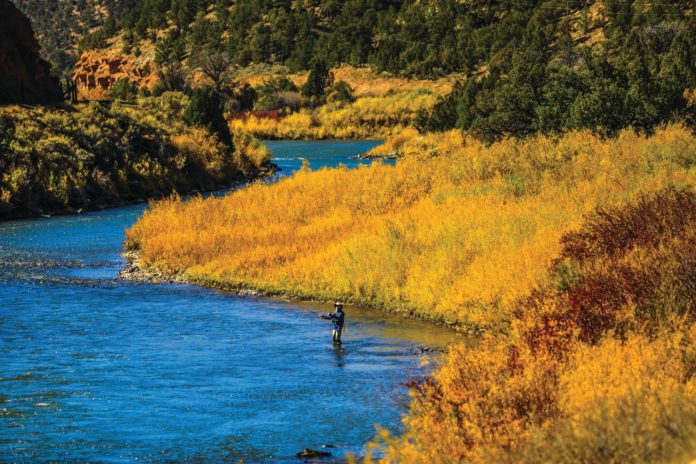By JAMES ANDERSON
The Associated Press
DENVER – Colorado wildlife officials on Wednesday urged anglers to avoid fishing along a stretch of the Colorado River because low flows during a historic drought in the U.S. West, critically warm water temperatures and sediment runoff from wildfire burn scars are all starving trout of oxygen.
The move along a 120-mile stretch of the river – unusual so early in the summer – is another consequence of the record heat and drought that’s afflicted the American West. The voluntary fishing ban runs from the town of Kremmling in north-central Colorado to Rifle in the western part of the state.
“The extreme drought on the Western Slope, plus the sediment and debris in the waterway, have created a really challenging situation for fish,” said Travis Duncan, spokesman for Colorado Parks and Wildlife.
River temperatures reaching and surpassing 70 degrees Fahrenheit pose a threat by depleting oxygen levels and possibly feeding algae blooms. Rainbow and brown trout in the Colorado River, which thrive in temperatures between 50F and 60F, become lethargic and often stop feeding, Duncan said, and wildlife officials have seen evidence of the fish dying in parts of the river.
“We’re asking folks to voluntarily refrain from fishing,” he said. “If the conditions persist, we’ll need to adopt a mandatory ban.”
Colorado River flows at two U.S. Geological Survey monitoring stations are less than half of historic levels, state wildlife officials said. At an upstream site, a Geological Survey gauge has been measuring between 600 and 700 cubic feet per second, compared with a typical 1,500 to 2,000 cubic feet per second.
Flows at a downstream gauge are about 1,250 cubic feet per second, compared with an expected 3,000 to 4,000 cubic feet per second, the state agency said.
Repeated mudslides, debris runoff and sediment from burn scars left behind by destructive wildfires last year, especially in the Glenwood Canyon area, are being dumped into the river.
“With the high sediment load, the fish can’t find clear water,” Colorado Parks and Wildlife aquatic biologist Kendall Bakich said in a statement. “They’ve got to sit through those conditions. And at nighttime, the temp isn’t coming down enough, so there’s no recovery for those fish right now. They’ve just got to hang on.”
The low flows and high temperatures are affecting catch-and-release trout fishing and fly-fishing operations like the one run by Tom Trowbridge, manager of Roaring Fork Anglers in Glenwood Springs.
In South Canyon west of Glenwood Springs, river temperatures have surpassed 70F for the past three days, and the coolest nighttime temperature was 65F, Trowbridge said. Luckily, his company has other river options nearby.
“In these temperatures, it is hard to catch and release the fish and have them survive the experience,” said Trowbridge, who’s seen voluntary restrictions during daytime hours in the past. The new ban runs round the clock.
Other Colorado rivers are being affected, too.
Wildlife officials said they could adopt a mandatory fishing closure on parts of the Yampa River in northern Colorado, where temperatures surpassed 75F on Tuesday. Biologists also are monitoring the Fraser River and the upper Colorado River. In June, officials imposed voluntary fishing restrictions on the Dolores River in southwest Colorado for the first time.
Credit: Source link































